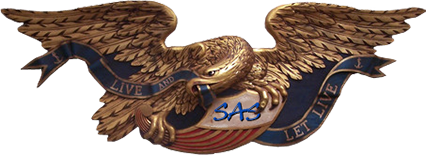Some pics of progress on my new forest covered version. I like it MUCH better! For one thing, it gives a better sense of the scale; the bare terrain textures suggesting forest cover make for an impression of a smaller landscape. And for another, the former ability to unrealistically belly land a plane anywhere on land is now nixed.
The texture underlying the layered forest has an appearance fairly similar to the forest overlying it. This is by design, so that the illusion of a full canopy of trees extending to the shoreline is maintained. The forest edge cannot be made to follow the beach at all exactly, and so the unavoidable 'gaps' along the shore are effectively 'camouflaged.'
Barakoma, looking north. The overall effect is of the quite uniform tropical forest covering nearly every square inch of these islands.

Vila, looking NNW. I've added a bunch of my palm plantation objects, as this airfield was built in the middle of the Vila coconut palm plantation. I've not given the plantation its full extent, in order to not have too many objects. The lower extent of the Vila river has been added, and the field moved a bit SW of the position I gave it in my previous iteration of this map (otherwise it would have cut across the river.) I'm contemplating giving at least the runway the light hued texturing, to suggest the crushed coral this strip was purportedly covered with.

On the ground at Seghi, looking NW. Here the forest comes close to the airstrip. To overcome the awful invisibility of the layered forest when seen from edge on, I've added a row of tropical forest side textures along the very edge. These forest side objects have a color and tone pretty close to that of the layered forest, in order that they do not stand out like the proverbial sore thumb.

Again at Seghi, as would be seen on a landing approach coming in from the west. Roughly midway between the observer and the near end of the airstrip can be seen the row of forest side textures, at least partially visible through gaps in the layered forest cover. These are handy in ascertaining where the edge of the dangerous forest lies, whichever is the direction of travel. In other words, a good aid during both take-off and landing, to ensure not hitting the forest cover and blowing up.


 Author
Topic: My treatment of agracier's New Georgia map (Read 10621 times)
Author
Topic: My treatment of agracier's New Georgia map (Read 10621 times)


